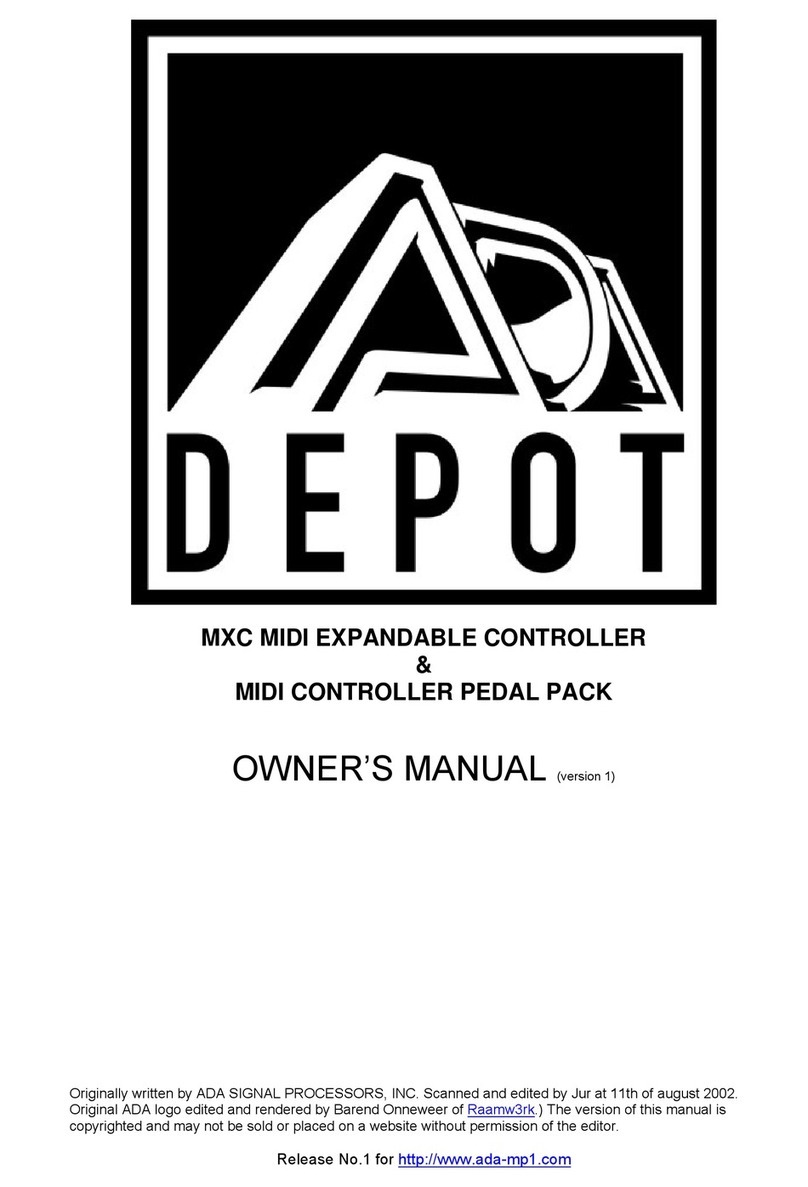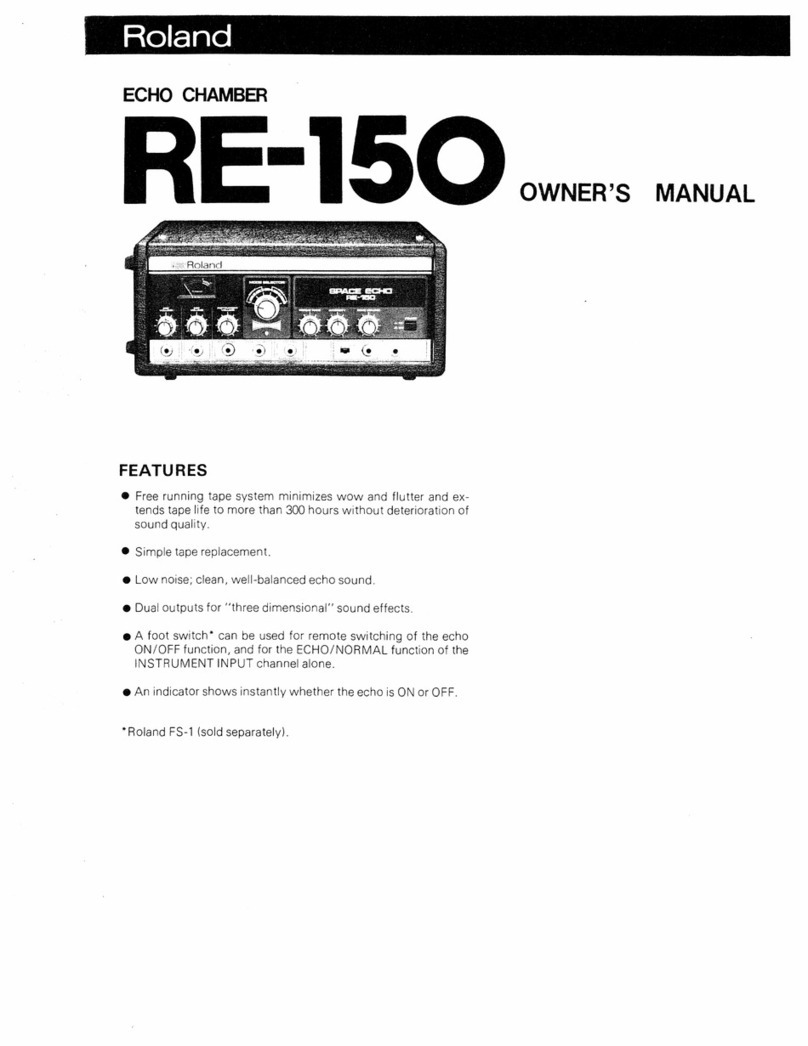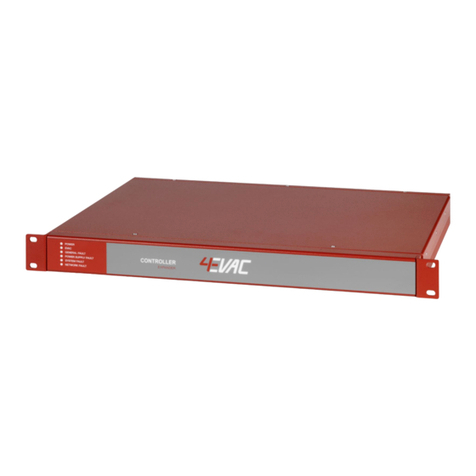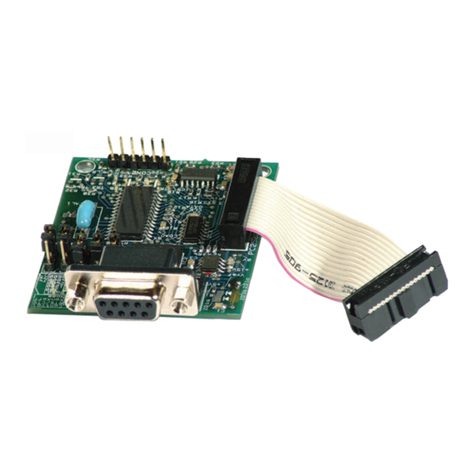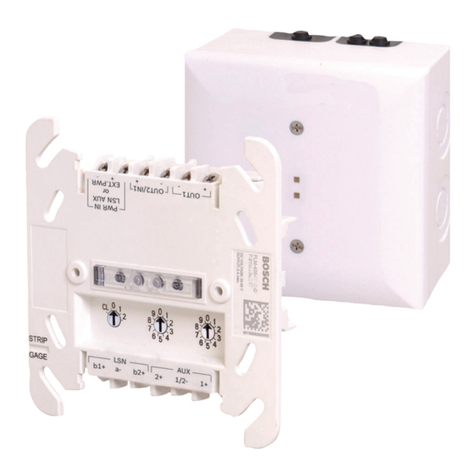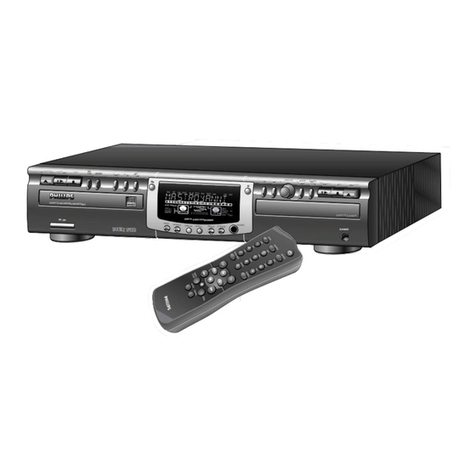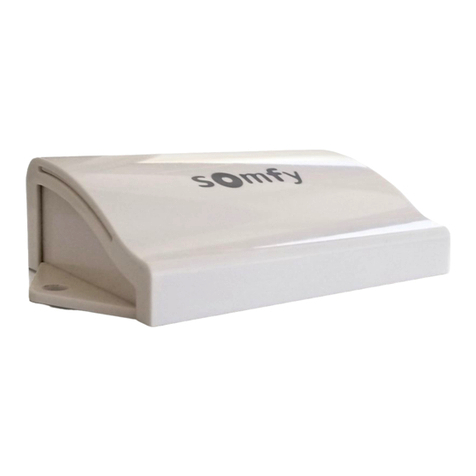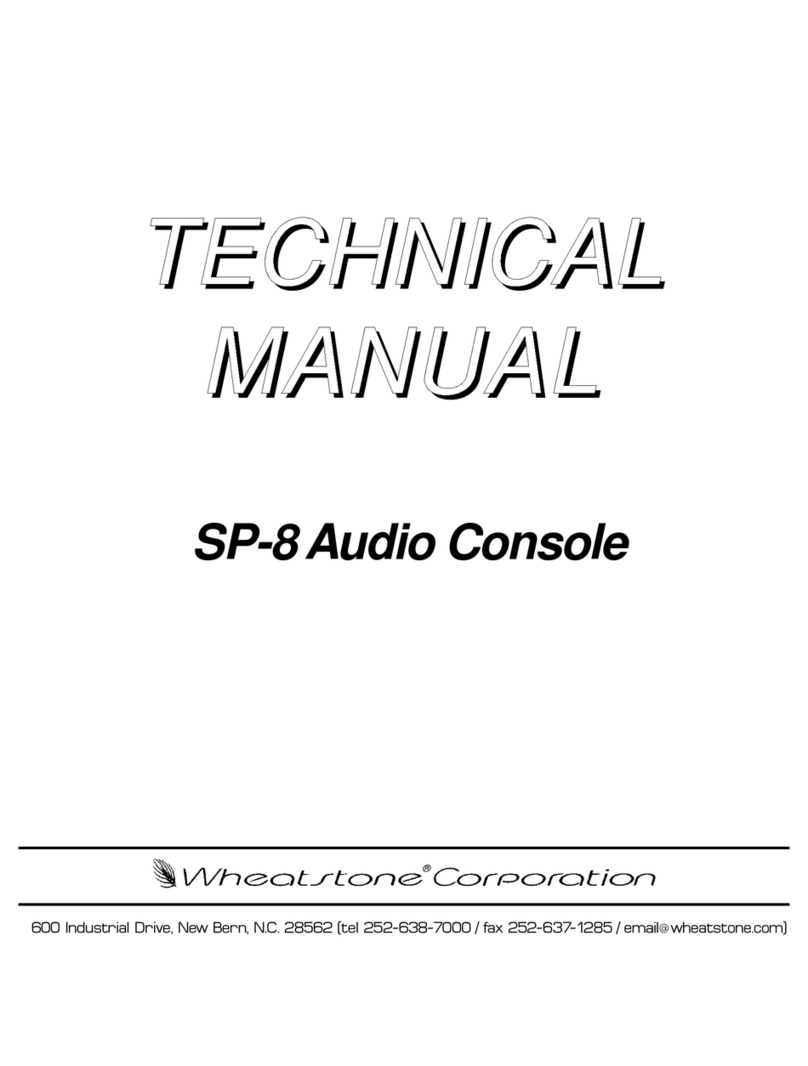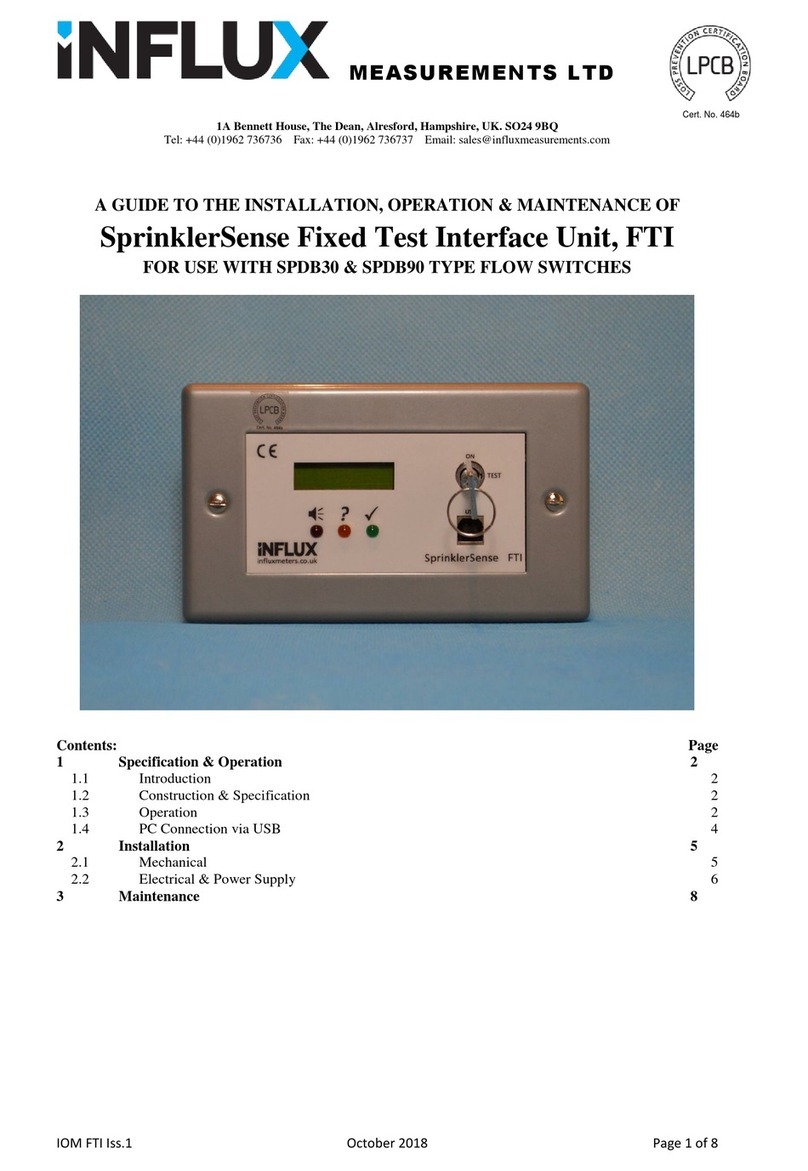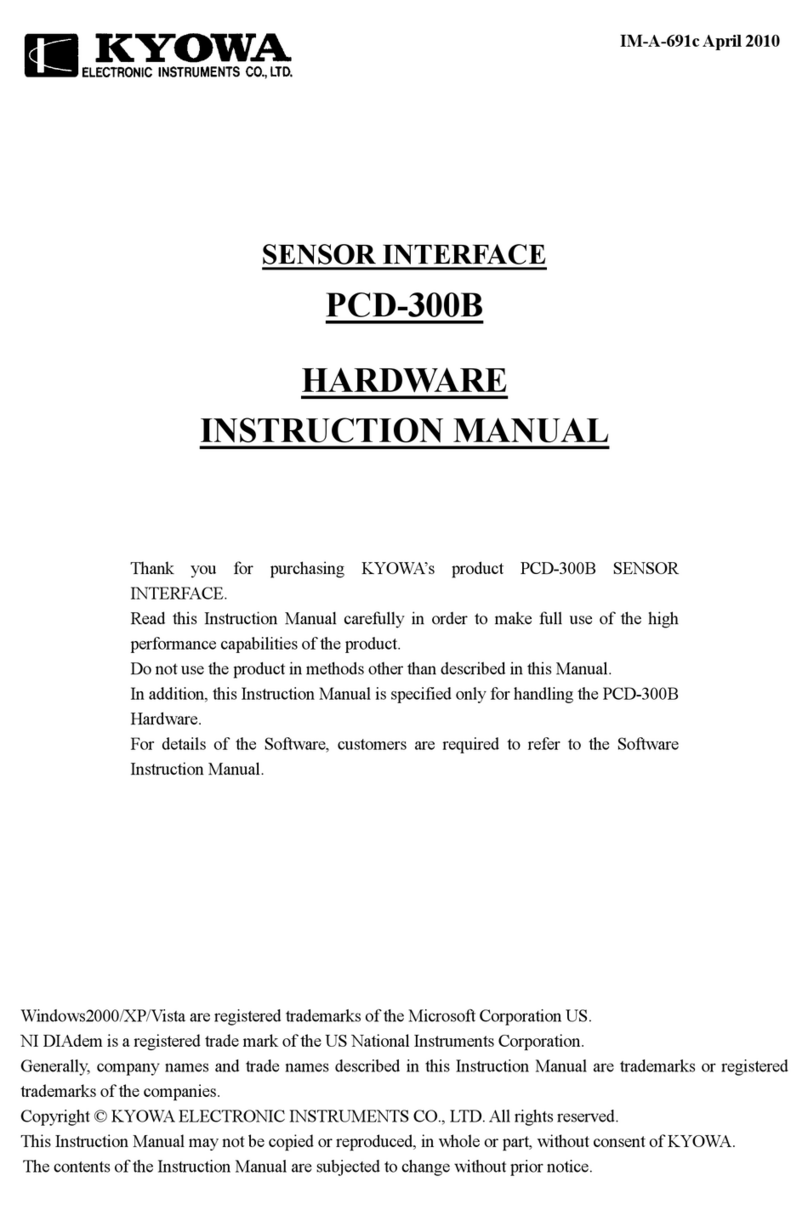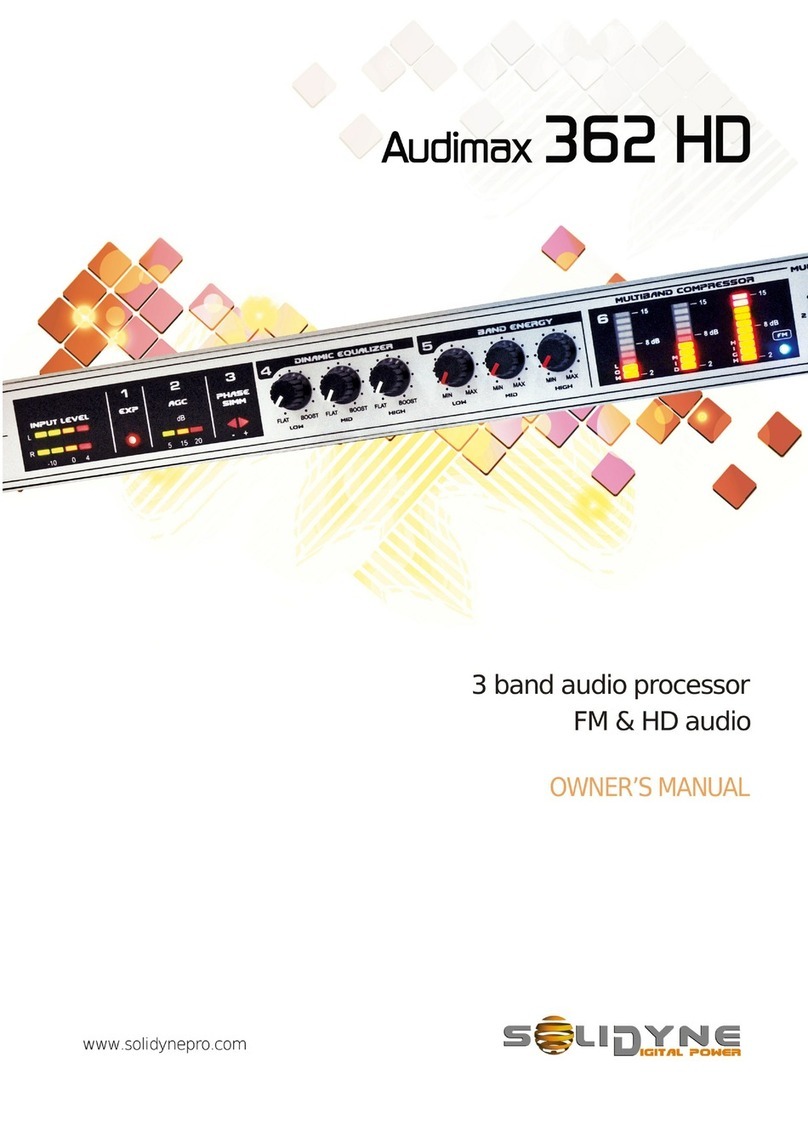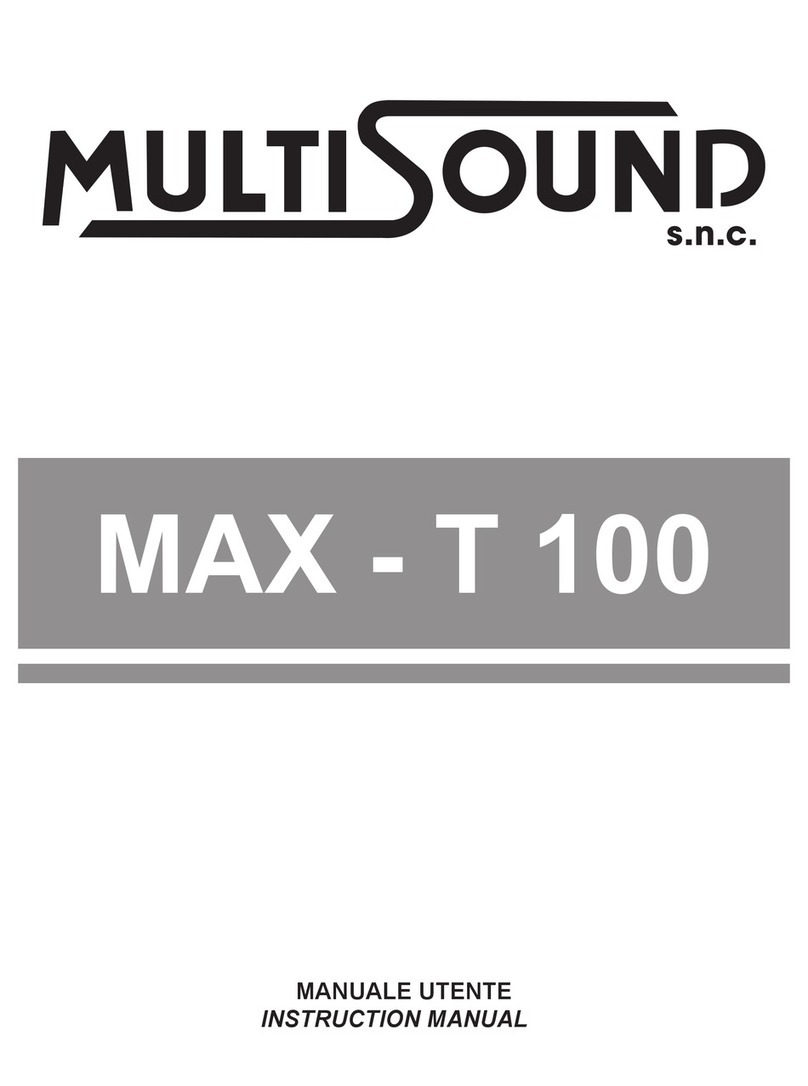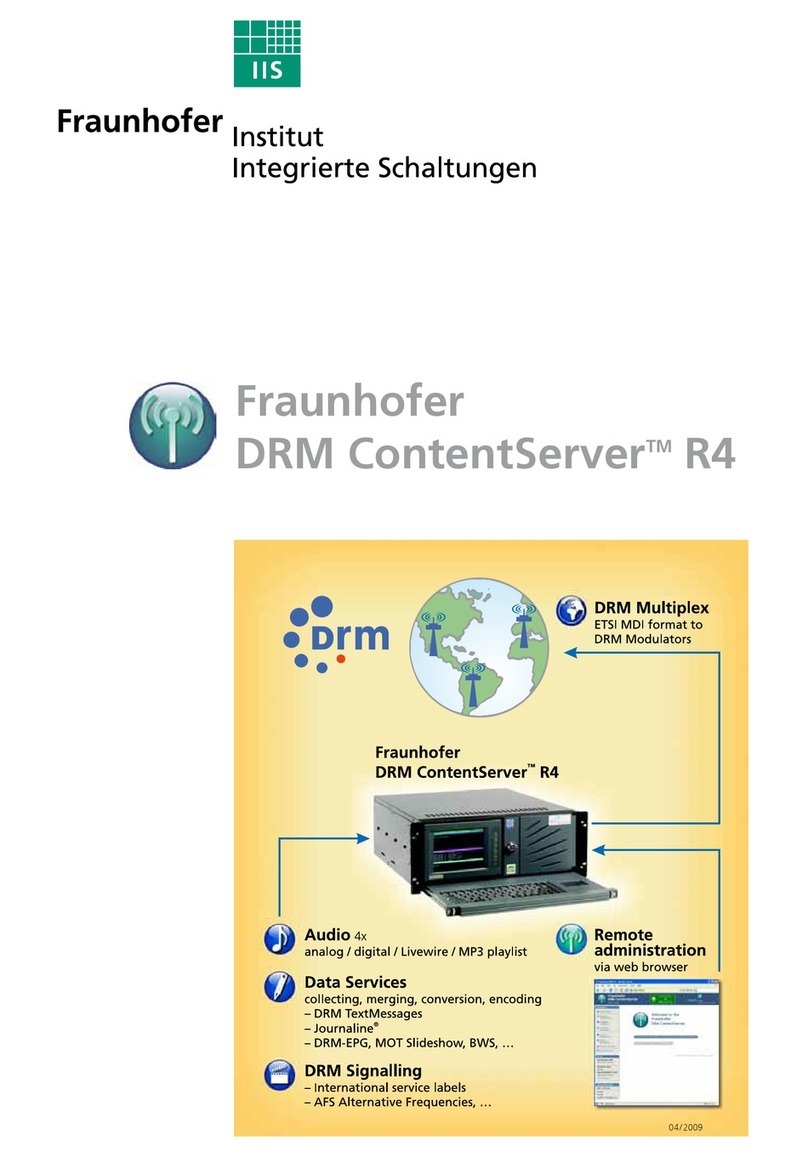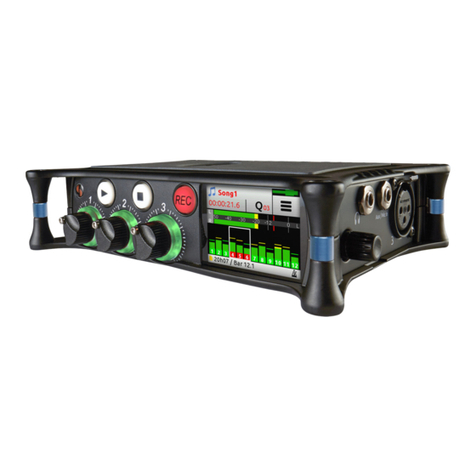A/DA MICROCAB I User manual

Originally written by ADA SIGNAL PROCESSORS, INC. Scanned and edited by Jur at 1th of october 2003.
Original ADA logo edited and rendered by Barend Onneweer of Raamw3rk.) The version of this manual is
copyrighted and may not be sold or placed on a website without permission of the editor.
Release No.1 for http://www.adadepot.com
MICROCAB I
OWNER’S MANUAL

ADA Microcab I owners manual version 1
CONTENTS
INTRODUCTION
FEATURES
PRECAUTIONS
QUICK SET UP
USING THE MICROCAB
HOW TO GET THE BEST TONE WITH YOUR MICROCAB
WHAT THE MICROCAB DOES
MICROCAB CENTERFOLD ILLUSTRATION
GLOSSARY
GRAPH A - VINTAGE 4X12, CLOSE/FAR MIKED
GRAPH B - OPEN BACK/SEALED BACK
GRAPH C - OFF-AXIS/ON-AXIS MIKING
SPECIFICATIONS
Page 2 of 9

ADA Microcab I owners manual version 1
INTRODUCTION
Thank you for purchasing the ADA MICROCAB Miked Guitar Cabinet Emulator. The
MICROCAB is designed to deliver the distinct warmth and presence of a "close-miked" guitar
speaker cabinet directly to a mixing console in both recording studios and sound
reinforcement applications. The MICROCAB uses the signal from the preamp outputs of a
guitar amplifier, or a rack-mounted preamp such as the ADA MP-1 MIDI TUBE PREAMP.
Your new MICROCAB will preserve all the tone and fidelity from your guitar, preamp, and
effects units, while delivering the frequency response of various speaker cabinets, simulating
difficult and time-consuming miking techniques used in recording studios.
Please take a few moments to read this manual and familiarize yourself with your new
MICROCAB.
IMPORTANT: At this time, please complete and return the enclosed warranty card.
FEATURES
• Produces the resonance, depth, sonic quality of a miked guitar cabinet.
• Emulates any type or size of guitar cabinet.
• Stereo ins and outs.
• Variable THUMP control allows you to "tune your cabinet's" low end.
• HI BALANCE control emulates mike placement and cabinet brightness.
• XLR and 1/4" mic and line outputs deliver more tone direct to tape.
• Pass Thru outputs give you the flexibility to use the MICROCAB on stage.
PRECAUTIONS
WARNING: To prevent fire or shock hazard, do not expose this appliance to rain or
moisture.
CAUTION: To prevent electric shock, do not remove cover. No user serviceable
parts inside. Refer servicing to qualified service personnel.
SET UP WARNING:
DO NOT PLUG YOUR AMPLIFIER OUTPUTS INTO THE MICROCAB INPUTS.
The MICROCAB Miked Guitar Cabinet Emulator is designed for use in the
preamp/effects stage of your guitar component system. A signal from the
power amplifier will overload and damage the MICROCAB.
Note: Refer to the centerfold illustration of this manual for MICROCAB diagram.
QUICK SET UP
The MICROCAB Miked Guitar Cabinet Emulator is designed to accept the preamp/effects
output levels only. DO NOT PLUG YOUR AMPLIFIER OUTPUTS INTO THE MICROCAB
INPUTS.
1. Connect stereo outputs of your preamp or effects device to the stereo inputs (A & B)
on rear panel of MICROCAB.
2. For line-level inputs on your mixing console use the MICROCAB 's 1/4" outputs. For
mic level inputs connect the MICROCAB 's XLR (balanced) outputs. For stereo
operation, connect outputs A & B to separate inputs on your mixing console.
3. Use ground lift switch on rear panel if necessary to eliminate any line noise or hum
Page 3 of 9

ADA Microcab I owners manual version 1
that may be present from poorly-balanced power sources or ground loops in your
system.
Note: You must have a good tone first! Set your preamp and effects to get your best tone
using your whole rig, including the guitar speakercabinets, before patching in the
MICROCAB.
USING THE MICROCAB
The MICROCAB can be used in the recording studio to quickly capture "that right tone" just
as it sounds coming out of your guitar cabinets. The MICROCAB is also used for live sound
reinforcement to get the exact tone on stage into the house system, without much of the
hassle involved in lengthy sound checks and mike placement trial and error, while providing
absolute isolation from other instruments onstage.
Since guitar speaker cabinet systems don't have a flat frequency response, some outboard
EQ is essential to simulate the characteristic tone and presence of a "live" speaker cabinet.
The ADA MICROCAB is designed specifically to emulate the presence, tone and coloration
found in a variety of modern and vintage speaker cabinets.
Further, since the signal at the speaker cabinet is brought to your mixing console via a
microphone, and not through a direct box (this would sound terrible), the microphone's
frequency response must be taken into account. The MICROCAB is designed to
accommodate this characteristic, delivering the "feel" and tone that has become an integral
part of the sound of amplified guitar.
Additionally, the ADA MICROCAB is capable of emulating the close-miking characteristics
of the Shure SM57 microphone—the industry standard for guitar miking in the studio and live
sound reinforcement. The SM57 is well-noted for its "proximity effect," or low frequency boost
at 180 Hz when placed very near the sound source (see Huber, Micro
phone Manual, Focal Press, 1988, p. 258), further enhancing the "thump" effect of the
British-style 4 x 12 cabinet. Also note (Graph C, p. 18) that the high frequency response from
the Shure SM57 when placed off-axis is greatly attenuated. The shallow comb filter nodes
across the mid-frequency band are another "live" characteristic that the ADA MICROCAB
incorporates into its tone-shaping circuitry (comb filter).
The Shure SM57 (note characteristic "bump" at 180 Hz).
Page 4 of 9

ADA Microcab I owners manual version 1
HOW TO GET THE BEST TONE WITH YOUR MICROCAB
First, get your best tone using your whole regular rig, including your speaker cabinets! Now,
to capture that tone to tape, insert the MICROCAB between your preamp and your power
amp. Remember, you can listen to your regular speaker tone by using the MICROCAB's
pass-thru jacks on the rear panel. These are hard-wired directly off the input jacks.
Try the variety of cabinet configuration tone settings offered by the MICROCAB to obtain the
sound you want, starting with the exact speaker configuration that you are using. Use the HI
BALANCE tone control on the front panel to adjust the brightness, and the THUMP control to
boost or cut the amount of low-frequency resonance, especially if you are emulating a sealed
cabinet. The MICROCAB offers emulations of 12-inch speakers in 1, 2, and 4-speaker
configurations, in both open-back and sealed enclosures. You can also use the VINTAGE
settings for a darker-sounding tone coloration.
Note: When using headphones with the MICROCAB, you may want to adjust HI BALANCE
downward to compensate for high frequency emphasis found in most headphones.
WHAT THE MICROCAB DOES
The ADA MICROCAB is a tone-shaping device designed to emulate the complex physical
and psychoacoustic effects that make up the unique "live" sound of a close-miked guitar
cabinet. In the early days of recording, "distant" or "ambient" miking—often using a single
room microphone for the entire performance—was the standard; the distinctly modern
technique of close-miking adds more immediacy and control over the instrument voice.
There are some "competitive" products on the market, simple band pass filters, cutting highs
and some lows. Such speaker emulators can sound "muddy," that is, lacking in definition or
"presence." Only the ADA MICROCAB offers true emulation of a classic "close-miked"
speaker cabinet. The MICROCAB delivers improved voicing, brilliant presence, "in your face"
high-midrange sizzle (1.2-1.5 KHz), and the characteristic "thump" (low frequency
resonance) found in classic guitar cabinets. Moreover, the ADA MICROCAB offers you the
versatility of having a variety of speaker cabinet tones at your fingertips in one compact
single-space rack device.
The purpose of calling the ADA MICROCAB a "miked" guitar cabinet emulator is to
distinguish it by features that account for the microphone in the audio path. As the number of
speakers is increased in a miked cabinet, the number of signal paths to the microphone
increases, adding a comb filter effect to the guitar sound on tape. The sound from these
"paths" have a different distance to travel to get to the microphone element and therefore
when they combine they produce cancellations and reinforcements across the frequency
spectrum. This is one of the sources of the "complex" feel of the close-miked guitar cabinet.
Comb Filter
The "thump" or low frequency resonance in guitar cabinets mentioned above is perhaps the
most powerful characteristic in live amplified guitar performance. Most cabinets are like the 4
x 12 (an array of four 12" speakers as is used in British-style stack-type cabinets) with no
ports (holes as in hifi loudspeaker enclosures) and no open backs. The frequency produced
by such a speaker cabinet array is around 200 Hz (abbr. for Hertz or cycles per second),
which resonates with the human chest cavity. The ADA MICROCAB is unique it its ability to
reproduce this power and feel of the live performance directly to tape!
Page 5 of 9

ADA Microcab I owners manual version 1
Page 6 of 9
e!

ADA Microcab I owners manual version 1
GLOSSARY
SOME AUDIO TERMS RELEVANT TO WHAT THE MICROCAB DOES
(From the CAMEO Dictionary of Creative Audio Terms, Gary Davis & Associates, 1979)
Coloration
Non-uniform frequency response resulting in distortion of the tonal quality of the source.
Close Miking
A technique for recording or sound reinforcement whereby the microphones are placed close
to vocalists and to instruments or small groups of instruments. Close miking provides a great
deal of presence and detail for the nearby sound source(s), while avoiding leakage from
more distant sound sources. Most of today's popular music recordings use close microphone
techniques.
Comb filter
A comb filter has a series of very narrow, deep notches where signals are attenuated. When
the frequency response of such filters is graphed they resemble a hair comb.
Directivity factor
For a loudspeaker, this is a measurement of how much the speaker focuses the sound in a
given direction. Directivity is measured by taking the ratio of the average sound level
throughout 360 to the maximum sound level in front of the speaker (at a given distance and
frequency).
Distant miking
A microphone placement technique where one or more mics are located at a distance of at
least several feet from the performers. Distant microphone placement allows a greater area
to be covered using fewer microphones than close mic placement, and is ideal for some
types of recording. Distant mic placement usually will not provide the presence and detail
possible with close mic placement.
Hass effect
Also known as the "precedence effect/' this psychoacoustic phenomenon was first described
by Helmut Hass. The Hass effect describes our ability to perceive the location of a sound
source based on the relative level and arrival time of the sound in each ear.
Presence Range
Refers to that area of the audio frequency spectrum which affects the perceived presence of
the sound. Assuming there is no echo or reverb, presence or the feeling of being "up front"
will be determined by the relative balance of those frequencies falling roughly in the 2 kHz to
5 kHz range.
Voicing
Refers to the careful equalization of a speaker/amplifier system as in a recording studio
monitor or sound reinforcement system to achieve a particular sound or effect.
Page 7 of 9

ADA Microcab I owners manual version 1
GRAPH A Vintage 4x12 Close/Far Miked
Above graph shows increasing tonal complexity of a 4 x 12 Vintage cabinet as the
microphone is moved closer to the speaker cabinet. At 5 meters, note fewer peaks, less low
range "thump," and less mid-hi range notches in the lower, dashed line. The greater the
coloration of the signal, the richer (and livelier) your tone will be.
GRAPH B Close Miked 2x12 Open Back/Sealed Back
Above graph compares response from an open back (solid line) vs. sealed back (dashed
line) 2 x 12 speaker cabinet. Note uneven and lower level response below 200 Hz in sealed
Page 8 of 9

ADA Microcab I owners manual version 1
cabinet, resulting in more complex and "darker" tone. The MicnoCAB offers eight types of
open/sealed enclosures.
GRAPH C 4x12 Sealed Cabinet Off-Axis/On-Axis Miking
This graph compares on-axis (solid line) vs. off-axis (dashed line) response characteristics in
a close-miked 4 x 12 sealed cabinet. Note lower off-axis response above 2 KHz, resulting in
less "brightness." This response difference can be emulated in the MICROCAB by adjusting
the HI BALANCE tone control.
SPECIFICATIONS
Dimensions: 1 rack unit x 5" deep
Width 19"
Depth 5"
Height 1-3/4"
Weight: 2.5 Ibs. / 4.5 Ibs., shipping
Maximum Input: +20dBV
Maximum Output: +19dBm
Input Impedance: 50k ohms
Power Consumption: 4 Watts - External A.C adapter 117 VAC/60 Hz
220 VAC / 50 Hz optional
100 VAC 50/60 Hz optional .
ADA Part Number 701071 version 1.0
Page 9 of 9
Table of contents
Other A/DA Recording Equipment manuals
